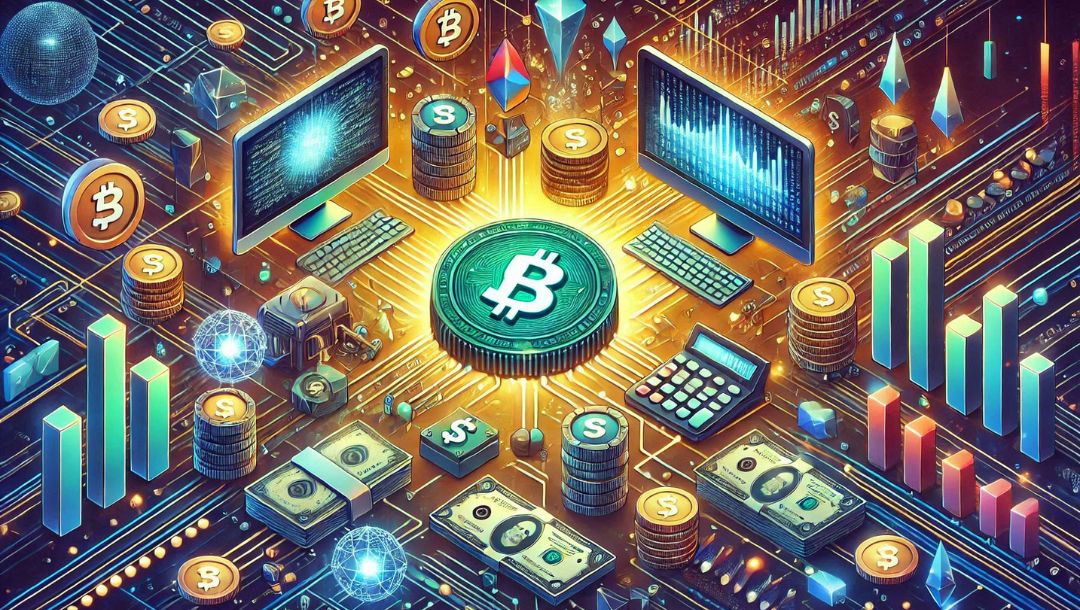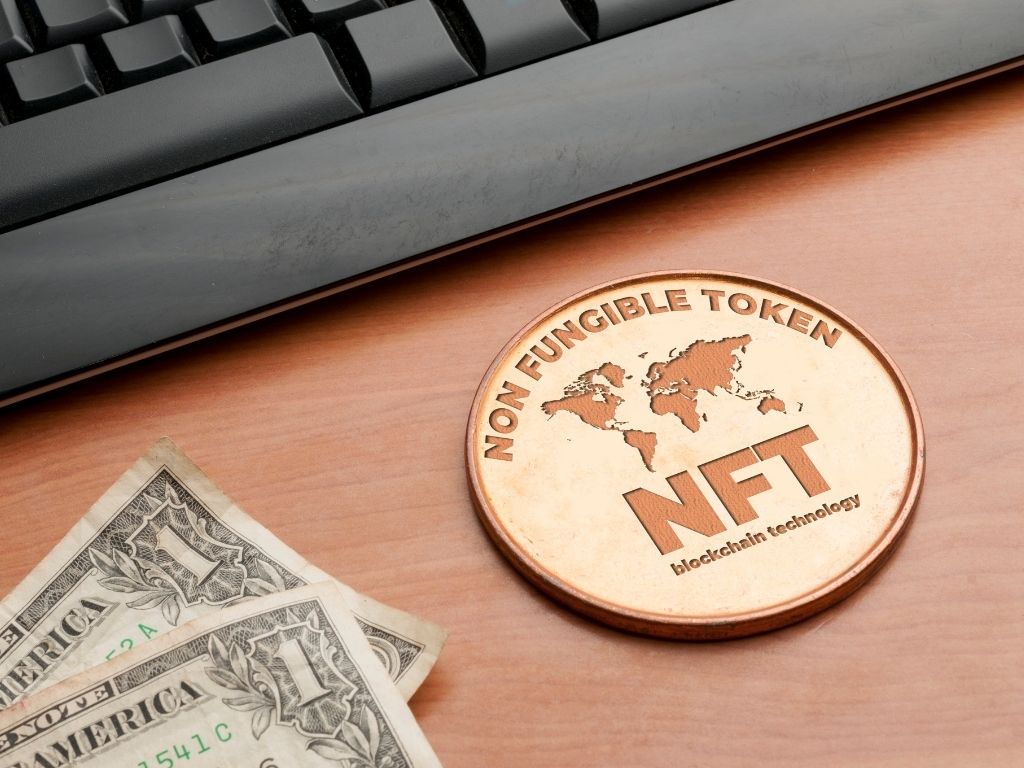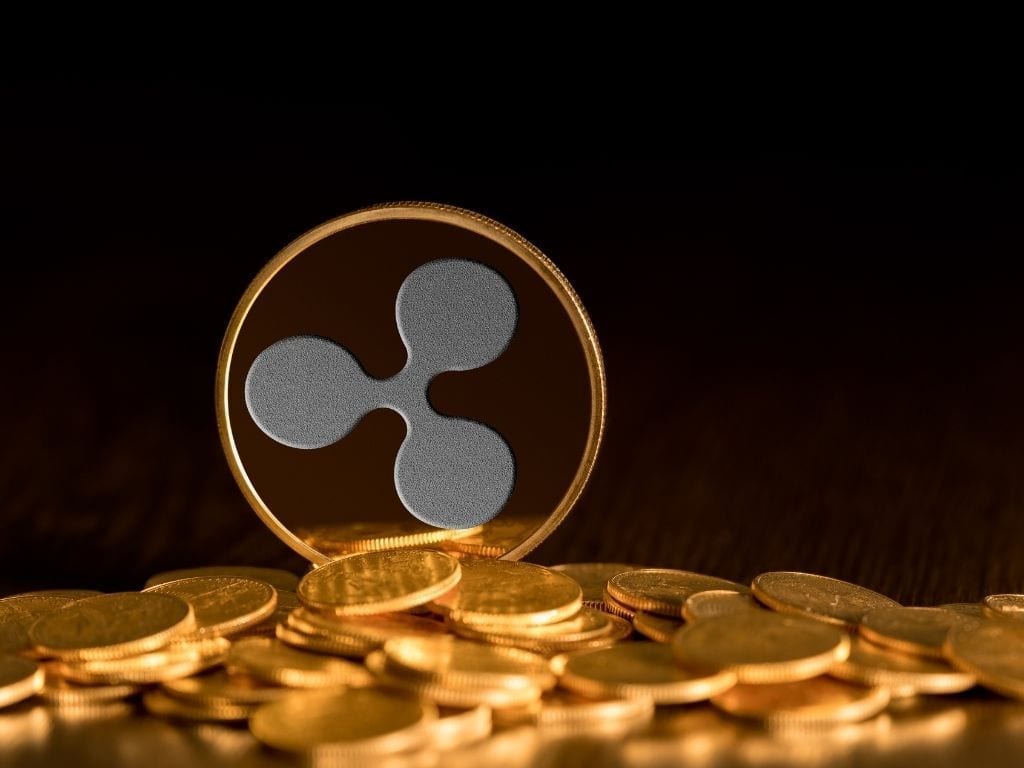How does an Non Fungible Token (NFT) make money?
NFTs, or non-fungible tokens, are kind of like owning a rare piece of digital art. They’re unique and can’t be swapped one-for-one like regular money or even cryptocurrencies. Think of them as a digital certificate of authenticity for things like art, music, or even virtual real estate. But how do these digital assets actually make you money? Well, there are a few ways, like creating and selling your own NFTs, trading them, or even staking them for passive income. Let’s dive into the details and explore how NFTs can be a potential goldmine.
Key Takeaways
- NFTs are unique digital assets that can represent anything from art to real estate.
- Creating and selling your own NFTs can be a direct way to earn money.
- Investing in NFT collections requires careful research and understanding of market trends.
- Trading NFTs on secondary markets can be profitable but involves risks.
- NFT staking can provide passive income, but it’s essential to understand the associated risks.
Understanding Non-Fungible Tokens and Their Value
What Makes NFTs Unique
NFTs, or non-fungible tokens, are unique digital assets that can’t be swapped on a one-to-one basis like cryptocurrencies. Each NFT carries distinct characteristics, making it valuable in its own right, especially in areas like art and collectibles. What sets NFTs apart is their unique identification codes created from metadata, which are stored on a blockchain. This connection between the token and the asset ensures its uniqueness. Unlike cryptocurrencies, NFTs are not interchangeable. Two NFTs might look similar, but they are inherently different due to their distinct metadata.
The Role of Blockchain in NFTs
Blockchain technology is the backbone of NFTs. It provides a secure and transparent way to verify ownership and authenticity of these digital assets. When an NFT is created, or “minted,” it is recorded on a blockchain, ensuring that its history and ownership are publicly accessible and immutable. This is crucial in preventing fraud and ensuring that the digital asset remains unique and verifiable.
How NFTs Differ from Cryptocurrencies
While both NFTs and cryptocurrencies exist on blockchains, they serve different purposes. Cryptocurrencies are fungible, meaning each unit is the same as any other and can be exchanged freely. NFTs, on the other hand, are non-fungible, meaning each one is unique and cannot be exchanged on a one-to-one basis with another. This uniqueness is what gives NFTs their value, as they can represent anything from a digital artwork to a piece of real estate, each with its own specific value and attributes.
Creating and Selling NFT Art
Steps to Create an NFT
Creating an NFT is like crafting a digital masterpiece. Start by choosing your art medium. NFTs can be anything from digital paintings to music files or even 3D models. Once you’ve chosen, spend time refining your digital creation to make it unique and appealing. After your artwork is ready, you’ll need to select a blockchain platform, such as Ethereum, to mint your NFT. This process involves uploading your art to a marketplace like OpenSea or Rarible, where it becomes part of the blockchain, securing its uniqueness.
Choosing the Right Platform for Selling
Selecting the right marketplace can make a big difference in your NFT’s success. Each platform has its own set of fees, user base, and supported blockchains. Popular marketplaces include OpenSea, Rarible, and Foundation. Research these platforms to understand which one aligns best with your art style and target audience. Consider factors such as transaction fees, ease of use, and community engagement when making your choice.
Marketing Your NFT Art
Once your NFT is minted, it’s time to market it. Building a buzz around your art can significantly influence its sale. Use social media platforms to showcase your work, engage with potential buyers, and build a community around your brand. Collaborating with other artists can also expand your reach. Consider creating limited edition collections to drive scarcity and interest. Remember, effective marketing is about storytelling; share the inspiration and journey behind your art to connect with your audience.
Investing in NFT Collections
Identifying Valuable NFT Collections
Investing in NFTs can be like a treasure hunt. You want to find those hidden gems that might turn into gold mines. The key is to identify collections that have staying power and appeal. Start by researching popular and upcoming collections. Keep an eye on NFT marketplaces and social media for trends. Look for collections with unique attributes or those created by reputable artists. Collections like CryptoPunks or Bored Ape Yacht Club have already shown their worth, but there are always new collections emerging that might be the next big thing.
Risks and Rewards of NFT Investment
NFTs are kind of like a rollercoaster ride—there are ups and downs. The rewards can be huge, with some NFTs selling for millions. But, remember, the market is volatile. Prices can skyrocket or plummet overnight. Here’s what you need to consider:
- Market Volatility: Prices can change rapidly, leading to big gains or losses.
- Lack of Liquidity: Some NFTs might not sell quickly if demand drops.
- Copyright Issues: Not all NFTs are created legally, so check the rights.
Despite the risks, successful NFT investing can be rewarding if you make informed choices.
Long-term vs Short-term Investment Strategies
When it comes to NFT investments, you need a game plan. Are you in it for the long haul or looking for a quick flip? Long-term strategies involve holding onto NFTs that you believe will appreciate over time. This requires patience and a belief in the underlying value of the NFT. On the other hand, short-term strategies focus on buying low and selling high, taking advantage of market trends. Both strategies have their merits, but it’s crucial to know your goals and risk tolerance.
Investing in NFTs isn’t just about making a quick buck. It’s about understanding the market, the technology, and the culture. Do your homework, and don’t invest more than you can afford to lose.
Trading NFTs on Secondary Markets
How to Trade NFTs Effectively
Trading NFTs on secondary markets can be a great way to make money, but it requires some know-how. First off, you need to sign up on a reliable NFT marketplace like OpenSea or Nifty Gateway. Once you’re set up, it’s all about timing and strategy. Keep an eye on market trends and look for NFTs that are undervalued. Buy low, sell high is the name of the game here.
- Sign Up: Register on a trusted NFT marketplace and link your crypto wallet.
- Research: Check out the latest trends and prices to spot potential buys.
- Buy and Sell: Look for NFTs with growth potential and sell them when the price is right.
Trading NFTs isn’t just about luck; it’s about being smart and staying informed. Market trends can change fast, so always be ready to adapt.
Platforms for NFT Trading
When it comes to trading NFTs, choosing the right platform is crucial. Some of the most popular ones include OpenSea, Rarible, and Foundation. Each platform has its own set of features, fees, and user base, so it’s important to pick one that aligns with your trading goals.
- OpenSea: Known for its wide variety of NFTs ranging from art to virtual worlds.
- Rarible: Offers a decentralized marketplace where you can create and sell your own NFTs.
- Foundation: Focuses on digital art and offers a more curated experience.
Understanding Market Trends
Understanding market trends is key to successful NFT trading. Prices can fluctuate wildly based on demand, rarity, and even social media buzz. Keeping up with these trends can help you make informed decisions about when to buy or sell.
- Demand and Rarity: The rarer an NFT, the higher its potential value.
- Social Media Influence: Buzz on platforms like Twitter can drive prices up or down.
- Economic Factors: General economic conditions can also affect NFT prices.
In 2025, the demand for white-label NFT marketplaces is expected to surge. These platforms offer businesses a cost-effective way to enter the NFT space, making them an attractive option for both new and seasoned traders.
Earning Passive Income Through NFT Staking
What is NFT Staking?
NFT staking might sound a bit technical, but it’s actually pretty straightforward. It involves locking up your NFTs in a digital vault, often referred to as a smart contract, to earn rewards. Think of it like putting money in a savings account to earn interest. Here, instead of cash, you’re using NFTs. The rewards usually come in the form of the platform’s native cryptocurrency, adding a nice passive income stream to your digital wallet.
Platforms That Support NFT Staking
Finding the right platform for staking is crucial. Some popular platforms include Unifty, NFT20, and Muse. When choosing a platform, consider factors like the types of NFTs supported, the reputation of the platform, and the kind of rewards offered.
- Unifty: Known for its user-friendly interface and diverse NFT support.
- NFT20: Offers liquidity pools, making it easier to trade staked NFTs.
- Muse: Provides flexible staking options with competitive rewards.
Benefits and Risks of Staking NFTs
Staking NFTs can be a great way to earn passive income, but it’s not without its risks. Here’s a quick rundown:
- Benefits:
- Risks:
Staking NFTs can be an exciting way to boost your income, but like any investment, it’s important to do your homework. Always research the platform thoroughly and understand the terms before staking your NFTs.
By exploring diverse earning opportunities through NFT staking, you can make the most of your digital assets while participating in the growing world of decentralized finance.
Exploring Other Ways to Profit from NFTs
NFTs aren’t just about buying and selling digital art. There are several creative ways to make money with these digital assets. Let’s dive into some of the lesser-known methods that could potentially boost your earnings.
NFT Rentals and Fractional Ownership
Ever thought about renting out your NFTs? Just like physical assets, digital ones can be rented too. This is especially popular in gaming and virtual spaces where specific NFTs offer unique advantages or access. Renting out these assets can bring in a steady stream of income.
Fractional ownership is another intriguing concept. Here, a pricey NFT is split into smaller, more affordable shares. This allows multiple people to invest in and own a piece of an NFT, spreading both the risk and potential profit.
Using NFTs for Fundraising
NFTs can be a powerful tool for fundraising. By creating tokens that represent a stake in a project or venture, creators can attract investors looking for unique opportunities. This approach not only raises funds but also builds a community around the project.
Creating NFT-Based Experiences
Offering unique experiences tied to NFT ownership is becoming a thing. Imagine virtual meet-and-greets, exclusive events, or special content access—all linked to owning a particular NFT. This adds an extra layer of value to the token, making it more appealing to potential buyers.
Exploring these unconventional methods can diversify your income streams and maximize your NFT investments.
These strategies highlight that profits from NFTs can be achieved through various methods beyond just buying and selling, opening up new avenues for creativity and revenue generation.
Challenges and Concerns in the NFT Market
Liquidity Issues in NFTs
NFTs often face liquidity problems. Unlike cryptocurrencies, which can be easily traded on exchanges, finding a buyer for an NFT can be tricky. This is especially true if the NFT is part of a less popular collection or if the market is experiencing a downturn. Liquidity issues mean that you might hold onto an NFT longer than you’d like, waiting for the right buyer to come along.
Intellectual Property and Piracy Concerns
Intellectual property rights are a big concern in the NFT world. When someone creates an NFT, they are essentially tokenizing a digital asset. But what happens if they don’t own the rights to that asset? This can lead to legal battles over ownership and the right to sell. Additionally, digital assets can be easily copied and shared without permission, raising piracy concerns.
Market Volatility and Its Impact
The NFT market is known for its volatility. Prices can skyrocket one day and plummet the next. This unpredictability can lead to significant financial gains, but also substantial losses. Investors in NFTs need to be prepared for these fluctuations and understand that the market can be as volatile as it is rewarding.
The NFT market is not for the faint-hearted. With rapid price changes and evolving trends, it requires a keen eye and a willingness to take risks. Always remember, investing in NFTs is as much about timing as it is about the asset itself.
Other Concerns
- Fraud and Scams: With the rise of NFTs, scams have also increased. Some people artificially inflate prices by selling NFTs to themselves.
- Regulatory Challenges: As the NFT market grows, so does the interest of regulators. This can lead to new laws and regulations that could affect how NFTs are bought and sold.
- Environmental Impact: Many blockchains used for NFTs consume a lot of energy, raising concerns about their environmental footprint.
In the ever-evolving world of NFTs, staying informed and cautious is key. Whether you’re a creator or an investor, understanding these challenges can help you navigate the market more effectively.
Wrapping It Up: The NFT Money-Making Game
So, there you have it. NFTs are more than just digital art or collectibles; they’re a new way to make money in the digital age. Whether you’re an artist looking to sell your creations, an investor eyeing the next big thing, or just someone curious about the hype, there’s a spot for you in the NFT world. But remember, like any investment, it’s not without risks. Prices can swing wildly, and what’s hot today might not be tomorrow. Do your homework, stay informed, and maybe, just maybe, you’ll find your niche in this ever-evolving market. Who knows? Your next big opportunity might just be a click away.
Frequently Asked Questions
What exactly is an NFT?
An NFT, or Non-Fungible Token, is like a digital certificate that shows you own something unique online, like a special drawing or song. Unlike regular money, you can’t trade one NFT for another because each one is different.
How do people make money with NFTs?
People make money with NFTs by creating and selling their own digital art, buying and selling NFTs at the right time, or earning rewards through NFT staking.
Are NFTs still a good way to earn money?
NFTs can still be a way to earn money, but it’s tricky. You need to understand the market and know when to buy or sell because prices can change quickly.
How do I start using NFTs?
To start with NFTs, you’ll need a digital wallet and some cryptocurrency like Ethereum. Then, you can buy or create NFTs on platforms like OpenSea or Rarible.
What’s the difference between NFTs and regular cryptocurrencies?
NFTs are unique and can’t be exchanged one-for-one like regular cryptocurrencies such as Bitcoin. Each NFT is different, like a rare collectible, while cryptocurrencies are like identical coins.
What risks are there in buying NFTs?
Buying NFTs can be risky because their value can change a lot. There’s also a chance of buying a fake NFT or not being able to sell it later.
Stay informed with daily updates from Blockchain Magazine on Google News. Click here to follow us and mark as favorite: [Blockchain Magazine on Google News].
Get Blockchain Insights In Inbox
Stay ahead of the curve with expert analysis and market updates.
latest from tech
Disclaimer: Any post shared by a third-party agency are sponsored and Blockchain Magazine has no views on any such posts. The views and opinions expressed in this post are those of the clients and do not necessarily reflect the official policy or position of Blockchain Magazine. The information provided in this post is for informational purposes only and should not be considered as financial, investment, or professional advice. Blockchain Magazine does not endorse or promote any specific products, services, or companies mentioned in this posts. Readers are encouraged to conduct their own research and consult with a qualified professional before making any financial decisions.

 Bitcoin
Bitcoin  Ethereum
Ethereum  XRP
XRP  Tether
Tether  Solana
Solana  Dogecoin
Dogecoin  USDC
USDC  Cardano
Cardano  Lido Staked Ether
Lido Staked Ether  TRON
TRON  Avalanche
Avalanche  Sui
Sui  Wrapped stETH
Wrapped stETH  Chainlink
Chainlink  Toncoin
Toncoin  Shiba Inu
Shiba Inu  Stellar
Stellar  Wrapped Bitcoin
Wrapped Bitcoin  Hedera
Hedera  Polkadot
Polkadot  WETH
WETH  Bitcoin Cash
Bitcoin Cash  Uniswap
Uniswap  Pepe
Pepe  Hyperliquid
Hyperliquid  Litecoin
Litecoin  LEO Token
LEO Token  Wrapped eETH
Wrapped eETH  NEAR Protocol
NEAR Protocol  Internet Computer
Internet Computer  Ethena USDe
Ethena USDe  USDS
USDS  Aptos
Aptos  Aave
Aave  Render
Render  Mantle
Mantle  Bittensor
Bittensor  POL (ex-MATIC)
POL (ex-MATIC)  Cronos
Cronos  Ethereum Classic
Ethereum Classic  Artificial Superintelligence Alliance
Artificial Superintelligence Alliance  Virtuals Protocol
Virtuals Protocol  WhiteBIT Coin
WhiteBIT Coin  Arbitrum
Arbitrum  MANTRA
MANTRA  Monero
Monero  Tokenize Xchange
Tokenize Xchange 



